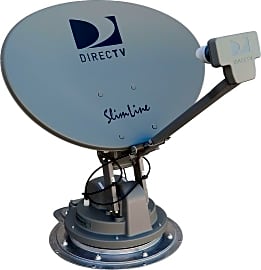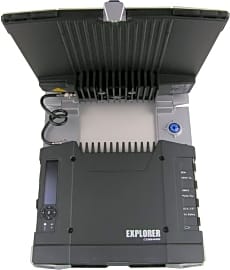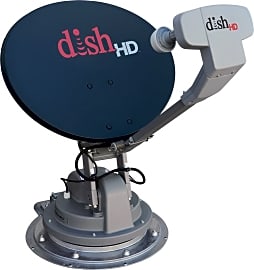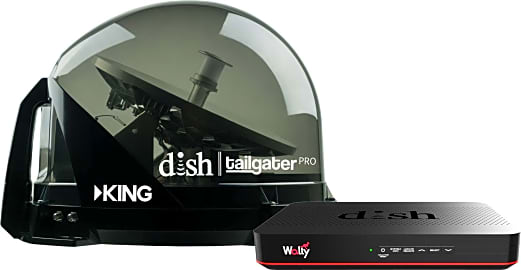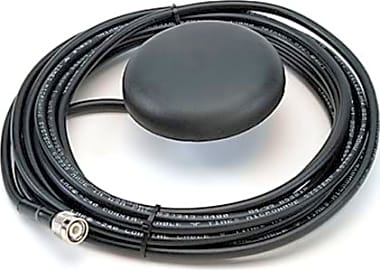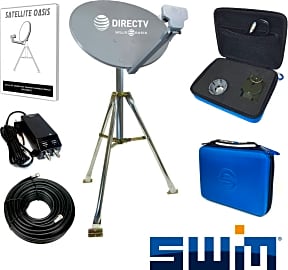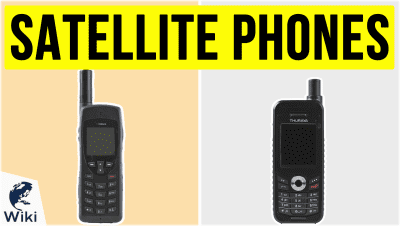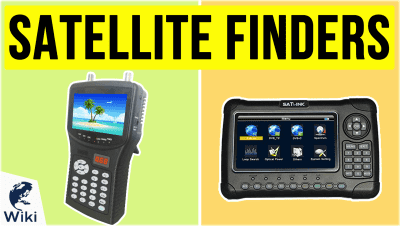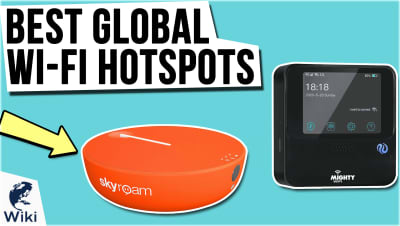The 10 Best Portable Satellite Antennas

This wiki has been updated 38 times since it was first published in January of 2017. Thanks to modern technology, you can still enjoy many of your favorite shows and movies even when you're camping in the wild, tailgating outside a sports stadium, or parked in an RV lot for the evening. Some of these portable antennas allow you to link up to satellites in near-earth orbit to receive HD programming, and others help you stay connected with your sat phone in remote areas. When users buy our independently chosen editorial choices, we may earn commissions to help fund the Wiki.
Editor's Notes
November 19, 2020:
While a lot of the models included on our previous ranking have remained, we saw fit to upgrade two models related more to sat phones and communications than to television consumption. That includes upgrading the previously ranked BlueCosmo model to the BlueCosmo AT1621-12, which is smaller, lighter, and easier to mount than the old model. Some users have asserted that models like these only work at their best when magnetically mounted to a large metal object like a truck or camper, but this model seems to work fine regardless of its installation point.
Another telecom model we replaced was the Inmarsat iSavi IsatHub, which pales severely in comparison with the Cobham Explorer 710. Both are BGAN terminals, but the Cobham achieves nearly double the speed right out of the box, and with its hot-swappable battery system, there doesn't have to be any down time as long as you've got a good signal and a supply of freshly charged batteries.
These, of course, are niche items compared to the TV-oriented models on our list, of which Winegard continues to lead the pack for both DirecTV and Dish network customers. Two of our favorite offerings among these are the Winegard Trav'ler SK-1000 and the Winegard Trav'ler SWM3, both of which fold down compactly when not in use, saving valuable head space on the tops of trucks and campers that might need all the clearance they can get under bridges and other structures.
July 09, 2019:
There are about 5,000 satellites currently orbiting the Earth, and they do a lot of different things. If you're looking for a portable satellite antenna, chances are you're looking for a way to watch TV while you're on the road. Two companies produce most of the portable devices built for RVs: Winegard and King. If you're planning on using Dish Network, you have quite a few options. Winegard's Pathway X2, Carryout G3, and Playmaker Dual are all moderately priced (though by no means cheap) and work with Dish HD channels. If you'll be traveling West of the Mississippi river, consider the Playmaker, as its dual-arc capability gives it a greater range than its siblings. Winegard's Trav'ler series is a little bit different, as they're both designed for permanent mounting and therefore can't be easily removed, but they will provide better reception while on your RV's roof. Their T4 is particularly costly, but it's also the only one readily available that can actually be used while you're driving down the road.
King's most advanced option is the Tailgater Pro. It's especially versatile because of the wide range of accessories it works with, although they are mostly sold separately. The Satellite Oasis kit comes with the DirecTV-manufactured SL3S slimline dish, and it is by far the most affordable way to get TV on the road. Sure, you have to position it just right every time you want to use it, but it's so much less expensive than the competition that it's a great choice for a lot of people.
Then there are two powerful antennas that serve wildly different purposes. The Inmarsat iSavi IsatHub is a worldwide Wi-Fi hotspot, and while it certainly won't let you stream video in the remote wilderness, it will let you send email and connect to any of the services that its somewhat low bandwidth can handle. It's one of the few such global devices that doesn't cost a boatload, but again, it's not meant for entertainment. Even more specialized is the BlueCosmo, as it's meant for use with Iridium devices, which, while effective, are awfully limited as far as bandwidth goes.
A Brief History Of Satellite Antennas
As a result, more consumers made the plunge, with over a half-million units being sold in 1984 alone.
While the idea of using satellites for just about any form of communication is second nature to us today, it's amazing to think how radical that idea would have seemed only a few decades ago.
The technology may be new, of course, but the idea behind it is rather old. The concept of using parabolic satellite antennas to reflect radio waves was taken from the tradition of focusing light into a beam by using a mirror. That technology has been around since antiquity, and simply needed to be re-purposed to fit modern needs.
In fact, antennas were instrumental in proving the very existence of radio waves. In 1888, the German scientist Heinrich Hertz successfully transmitted a low-frequency wave from one antenna to another. However, parabolic antennas aren't ideal for low-frequency emissions, and so they would largely stay on the back burner until microwaves found use after World War II.
That war would foster an increased reliance on radar for military purposes, and so parabolic antennas began to enjoy a resurgence. The ensuing Cold War would emphasize the need to transmit information and propaganda (and Hogan's Heroes reruns) across wide swaths of land. Plus, there were immense commercial possibilities involved, so satellite television started to become a development priority.
The first public television satellite signal was sent from Europe to North America via the Telstar satellite in 1962, with a US-to-Japan transmission following a few months later. Not to be outdone, the Soviets made their own successful broadcast in 1967.
All of this laid the groundwork for the consumer satellite dish, which would become a reality in 1976. HBO, TBS, and the Christian Broadcasting Network were among the first programmers to utilize this new technology, with PBS not far behind. However, there was a limited audience for early dishes, as they were massive — and massively expensive (and that's before considering the cost of HBO).
The 1980s saw incredible advances in the technology, allowing for a reduction in both size and price. As a result, more consumers made the plunge, with over a half-million units being sold in 1984 alone. Unfortunately, not everyone saw this as a welcome change, especially landlords and homeowner's associations, which viewed the dishes as eyesores.
The early 1990s saw the release of PrimeStar, a subscription satellite service launched by a conglomerate of cable companies. Its popularity was immense but short-lived, as it soon fell behind newly-launched competitors DirecTV and Dish Network.
Today, you can receive crystal-clear picture and video on a satellite that's barely noticeable, and the units can be found in homes nationwide. It's likely that future changes to the industry will bring about even smaller dishes, while also improving the quality, cost, and reliability of the service.
It's amazing, really — electromagnetic waves are willing to go all the way to space just to make sure you never leave your couch.
How Satellite Antennas Work
Have you ever wondered how your cop show can be beamed from space to television sets around the country, all at the same time? The answer lies in how satellite antennas work.
However, the further that signal has to travel, the more it will diminish in strength along the way — bad news for anyone living far from the satellite's location.
The process starts when your TV provider blasts the signal from a ground-based station to a geosynchronous satellite that orbits a single spot over the Earth. When this beam hits the satellite, it's converted into an electromagnetic wave, and they like to spread. Think about what happens to the water when you throw a rock in a still pond, and you'll have a pretty good idea of what the satellite does to the signal.
However, the further that signal has to travel, the more it will diminish in strength along the way — bad news for anyone living far from the satellite's location. That's where the parabolic antenna comes in.
The wide "dish" of the antenna collects as much of the dispersed waves as it can, and then re-focuses them to boost their strength. It then zaps this new wave over to a smaller receiver opposite the middle of the dish, like a magnifying glass held in the sunlight. From there, the signal travels to your TV, likely via coaxial cable.
Choosing The Right Portable Satellite Antenna
Whether you're looking for a portable satellite antenna to spice up your next tailgate, improve a camping trip, or just liven up your RV, finding the right option can make all the difference in the world.
Before you start shopping, however, know that you probably won't get picture quality that rivals stationary models. That said, you can still get more than your money's worth, thanks to their convenience, low cost, and portability.
You may also need to grab some extra coaxial cable if any of the televisions are going to be set up far from the dish itself.
The first consideration is whether you want a manual or automatic option. Manual is cheaper, but you'll have to go through the hassle of finding a signal, and as a result most models come with bubble levels and other calibration equipment. Automatic satellites are "set and forget" units, but they're also more expensive.
Decide how many TVs you'll want to hook up, as well. The signal will inevitably weaken as it splits among different units, so you'll need a more powerful antenna if you're looking to set up several sets (or you'll need to invest in a cable amplifier). You may also need to grab some extra coaxial cable if any of the televisions are going to be set up far from the dish itself.
Not all antennas are capable of in-motion use, either, so if you want to watch the Discovery Channel while driving through Yellowstone, you'll need to make sure you have a dish that's capable of supporting such an endeavor.
Ultimately, you'll need to pay a little more for better performance and versatility, but that's likely money well-spent if you plan to use the satellite frequently. After all, the worst thing that could happen is that the satellite could go out while you're on vacation, forcing you to actually talk to your family.



